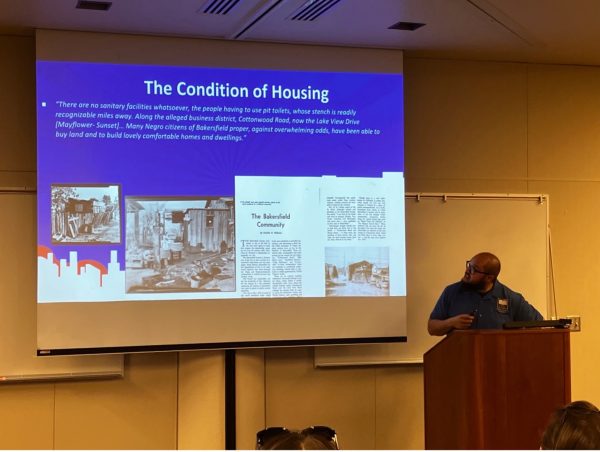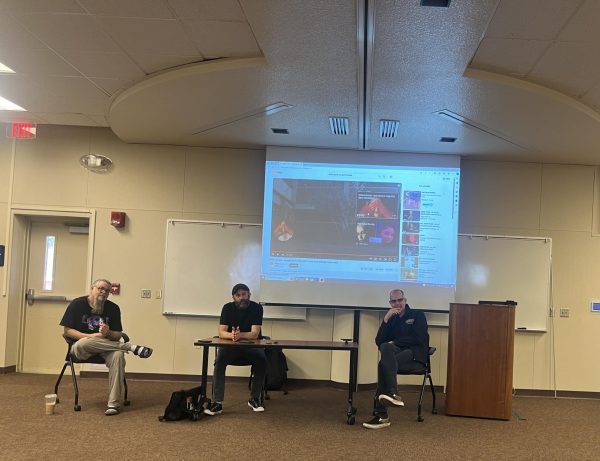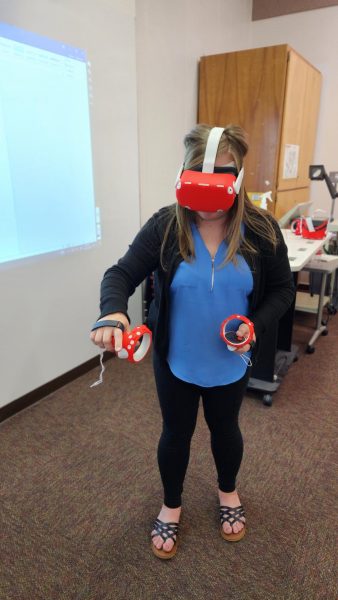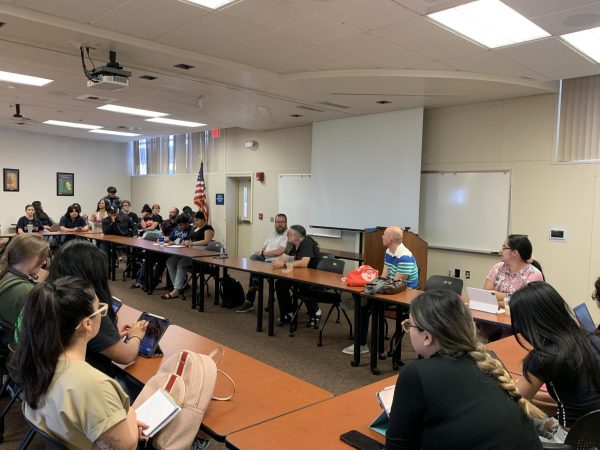Kern County fails those suffering from eating disorders
November 30, 2017
The psychiatrist asked if I was willing to enter a treatment center for eating disorders.
“Yes,” I said. She looked at me, suspicious.
“There’s an opening at a hospital in Los Angeles,” she said. “Go home and pack, you’ll be admitted tomorrow.” My mother wept. My brother, only eight years old, held on to the hem of my jacket and buried his face in my side.
My mother drove us home, each of us crying in silence. She researched the hospital I would attend, showing me pictures of the facility on her laptop. The rooms were beautiful, full of dark wooden furniture and deep colors. I packed a bag.
I was given a list of items I could not bring: shaving razors, mirrors, anything made of glass, anything that could be broken. I carefully selected each item I would take with me: a picture of my mother, a blanket from my brother, my favorite novel, and a treasured necklace. I was admitted to an inpatient psychiatric hospital the next day.
The first two days of treatment passed by slowly. I had to learn what was and was not allowed, how I could and could not behave; each rule more bizarre than the next. I had little contact with the outside world and limited opportunities to speak to my family. When I signed the consent forms and watched my mother leave the hospital, I despaired. I was 16-years-old, living in a hospital away from everyone who loved me.
Though my time in a treatment center saved my life, the logistics of relocating to another town caused detrimental effects that rippled through my high school career and my adult life. Since I was no longer in my school district, I couldn’t attend classes remotely, and when I returned from the hospital, I had missed weeks of school. I had to enroll in a continuation school in order to graduate.
My mother had sought help from every institution she could find, soliciting teachers, doctors, and therapists for resources. Apart from personal therapy, there were no treatments available. The only way I could receive treatment would be to leave my family and education to stay in a treatment center hours away. For my family, visiting me in the hospital and participating in my treatment became increasingly difficult and due to the cost of transportation, my mother could only visit me once during my month in the hospital.
Though taboo, eating disorders are not uncommon. Over 30 million people in the U.S. will experience an eating disorder during their lifetime, according to the National Eating Disorder Association. For those of us suffering from eating disorders in Kern County, there are no options for hospitalization. The nearest treatment center available to Kern residents is over two hours away. The closest available treatment option for my family was in LA County.
The absence of treatment options allowed my eating disorder to fester, becoming a virulent part of my being. I spent each day ruminating on my disorder and planning how I would purge, self-harm and abstain from food. By the time I was formally diagnosed, I had been struggling with anorexia and bulimia for years. At the height of my illness, I went without eating and digesting food for over six months. It was only when I began speaking about my own experiences that I discovered how many other men and women had fought similar battles.
Bakersfield resident Ariana Hamisch, 20, experienced similar circumstances when she sought treatment for an eating disorder in high school.
“The only treatment my family could find for me was a nutritionist. I had to go to a hospital in LA,” said Hamisch.
Hamisch was hospitalized for weeks, causing her to miss a considerable amount of school. Since there are no treatment centers in Kern County, she had to drive to LA once a week for outpatient treatment after she was discharged.
“The transition to coming home was very difficult, especially having to leave every Wednesday. Sometimes I was so exhausted I would take the entire week off (from school). It was stressful, for my whole family,” said Hamisch.
Lacey, another Kern County resident, who declined to give her last name due to the sensitivity of the issue, sought help through a general practitioner, psychiatrist, and therapist. None could give her the adequate treatment.
“I sought treatment for my eating disorder through my general practitioner, and then my first psychiatrist. Neither one of them were much help,” said Lacey. The only referral she was given was to a nutritionist, something that seems a common occurrence, a bandage placed over a wound.
The weeks following my discharge from the hospital revealed to me the depth of the lack of medical care in Kern County for those with eating disorders. When I left treatment and returned to Bakersfield, I felt as if I were drowning. There were no support groups available, and I couldn’t commute to LA each day for further treatment. I went from being monitored and cared for at all times to returning to the environment that allowed my illness to thrive.
“That’s precisely why I’m an advocate for treating things locally,” said Amy Richardson, a marriage and family counselor who has experience in treating eating disorders. “If you’re hospitalized two, three hours away, you come back to a community that is totally disconnected from the support system you developed during treatment. All of the connections you made in treatment disappear when you come home, you come home cold.”
Coming home from treatment to an environment with no resources is the fate of each person in Kern County who needs inpatient eating disorder treatment. Eating disorders have the highest mortality rate of all mental illnesses, according to the National Association of Anorexia Nervosa and Associated Disorders. The lack of treatment availability in Kern County is a grave medical failure. The expectation to relocate for treatment is unjustly placed upon people with eating disorders. It leaves two options for those suffering: pursue treatment in another city or suffer in silence.














Camille Campos • Nov 4, 2018 at 7:44 pm
Hello Paige,
I feel very strongly about the fact that there is no help here I’m keen county for eating disorder treatment as well. I was wondering if you have gained any ground on this issue?
Feel free to contact me by email!